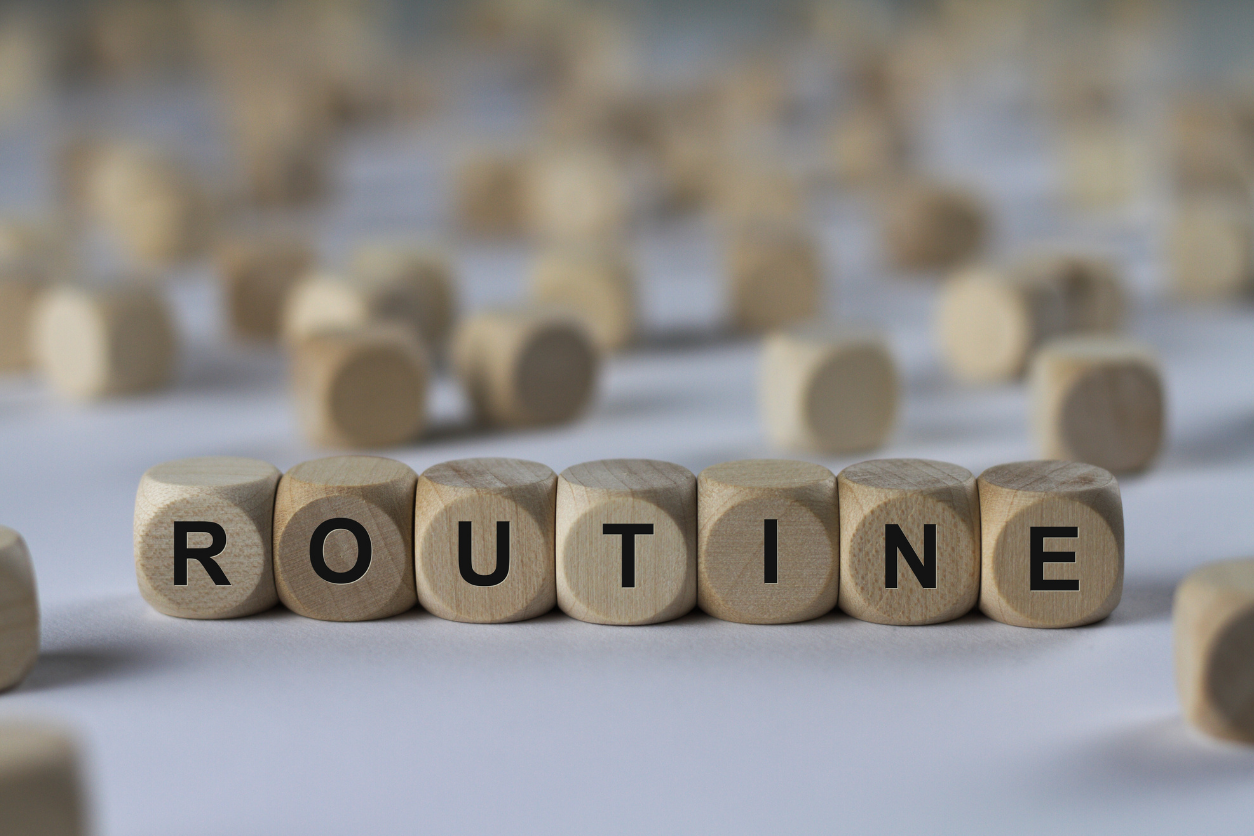Routine is an anchor. Professional athletes have a routine they go through before a game or a meet. The routine anchors them, helping them manage the uncertainty of what will come during the competition. Coping with the unpredictable is more do-able when we have some kind of rhythm.
2020 never seemed to give way to a rhythm. Routine and structure flew out the window. The information, the expectation, even the dilemma changed daily. What worked yesterday, no longer worked today. Students couldn’t find their flow, remote workers lost track of time, people working or schooling in person landed in quarantine repeatedly. We all found ourselves desperate for a routine — something predictable.
2021 ushers in the opportunity to choose a new rhythm. Yes, the pandemic still rages and yet something about turning the calendar year over challenges us to re-think our current decisions — a perfect time to find a new rhythm.
Even if you don’t typically thrive on strict schedules, having a routine can be helpful in times of uncertainty or stress. Children need structure — having specific meal times, bed times, play times — makes them feel more secure. Adults are no different. We find security in structure or routine. It improves our focus, organization and productivity. Lack of routine increases feelings of distress.
Many of our automatic routines had to shift in 2020, like washing our hands when we arrived at home, or wearing a mask before we entered a building, or walking to the kitchen table for work instead of driving downtown. Our minds already had our routine on auto pilot. Disrupting the routines required us to use more of our mental capacity. Establishing some new rhythms will help us reduce some of the strain we are under.
Likely one thing that didn’t change in 2020 was brushing your teeth. I suspect you did that with the same auto pilot as 2019. VICTORY — one stress-free area of your day. Establishing a handful of other rhythms, not dependent on the state of the pandemic, will help us reduce our stress and regain some feeling of control.
Start by creating new rhythm around the important things — rest, relaxation, fun. Purposely structuring our day to include some downtime or family fun time, will make it much more do-able even on the days when the unexpected happens. Reading with the kids before bed, taking the dog for a walk after dinner, going for a run every morning — each of us has different values, structuring your new rhythm around your values is an important step.
Once you’ve decided on a new rhythm:
- Commit to a full 30 days. This is all the time you need to establish something new.
- Make it daily. Consistency is key. Activities you do every few days are trickier to lock in, so do it every day.
- Start small. Don’t try to create a new rhythm with 14 new items or go from never running to running 5 miles daily. Start simple and small.
- Post reminders. At about the two week marker, it’s easy to forget. Placing reminders in your path and setting alarms helps incorporate the new rhythm.
- Consistency. Do it at the same time. If you are trying to include a work out before you leave for work, wake up at the same time every day. If you want to read to the kids every night, do it at the same time every day.
- Interrupt your thought pattern. When you hear yourself say, “I can’t get this right” or “ I’m no good at this” ADD “and yet . . .” “And yet I’m working on it.” “And yet, I will get better.” “And yet, if I stay with it, good things will happen.”
When the state of the world doesn’t hand you a routine, it’s time to create your own new rhythm. What will your new 2021 rhythm be?












